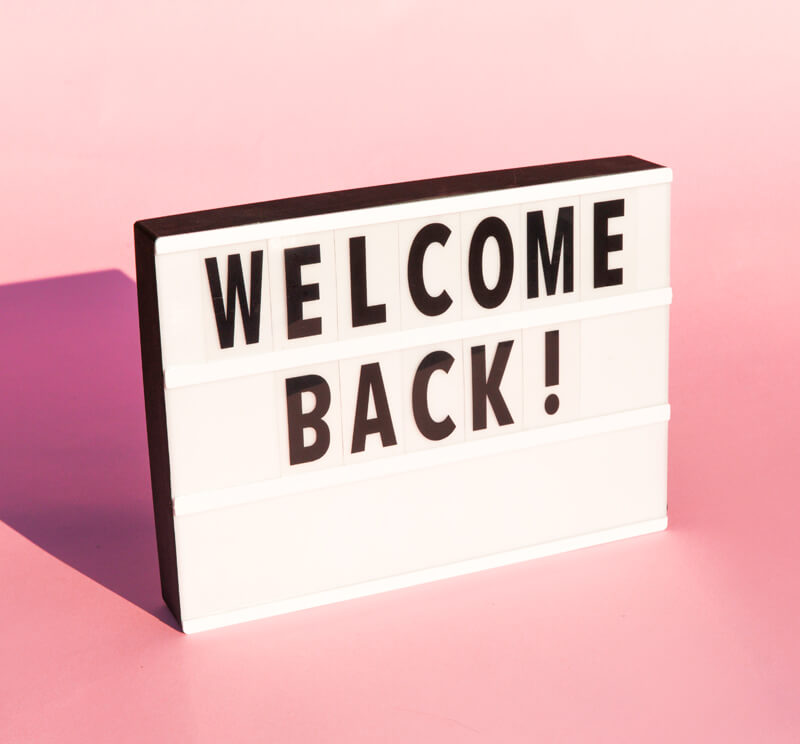Summary
With so much happening in the world, it may be easy to overlook that the nation is starting to phase in plans for returning to the workplace.
To say that 2020 has been unpredictable might be the understatement of the century. With so much happening in the world at such a rapid pace, it may be easy for some to overlook the fact that the nation is starting to phase in plans for returning to the workplace after the COVID-19 lockdown.
WorldatWork and HALO
HALO teamed up with WorldatWork for the Back-to-Work Playbook, a less formal but timely survey of over 600 HR professionals, to shed more light on how they are managing this transition. While the timing of these back-to-work strategies run the gamut, June was identified as the most desirable month to reopen (25% agreed), followed closely by July (19%), September (16%), and notably, “Sometime in 2021” (13%).
As it stands, June will be our first big back-to-work test, to see if we can keep employees and customers safe and make a smooth transition into an uncertain new normal, and much hangs in the balance. Deficiencies in coronavirus testing capabilities, unknown aspects of the virus’s pathology, and a sometimes questionable federal response are putting an immeasurable burden on local governments and private industries to manage the associated risks.
Complicated Management
The WorldatWork/HALO Recognition survey found that while two-thirds of respondents (66%) are relying on reopening guidance from state government officials, several other data sources are also being given significant weight, including city officials (48%), healthcare professionals (27%), public health authorities (60%), and employee feedback (25%). The result is becoming a strategy that combines aspects from multiple sources.
This can get confusing in other words. Layer in the future threats we face from the virus, like a second wave or a possible seasonal pattern, and it gets even more complex. 66% of respondents are creating a contingency plan for a second wave of the virus, and 30% are undecided. There is still a bit of apprehension, and the month of June will tell us quite a lot about what tactics are working, and how to move forward.
What We Do Know
Thanks to the snapshot gained by the report, there are a few things we are fairly certain of at the time of this writing, and a general overall strategy is presenting itself:
- Personal and public health will be the main thru line of returning to work, everything will revolve around it. Personal protective equipment (PPE) is in high demand for industries that interact with the public or work in close quarters. 63% of respondents said PPE is a part of their reopening strategies, and an overwhelming majority of indoor workplaces plan to add additional cleaning measures and social distancing protocols. One in four organizations are also adding or enhancing wellness programs.
- Flexible Scheduling and remote positions will still play a huge part going forward. The most overwhelming majorities in the study came from the question around remote work and scheduling arrangements. 81% of respondents plan to continue remote arrangements, giving those employees more flexibility in when and how they return to their workplace. In other situations, there is strong support (73%) for offering flexible scheduling to assist with the additional rigors of child/eldercare, and other complications that may arise.
- Business Travel will be heavily impacted but not completely collapsed. Only 24% of respondents said they would be suspending all business travel for the foreseeable future, with 56% only limiting it to essential travel. Traditional sales channels and large conferences may need to be rethought in the short-term, but it appears as if there is some confidence that travel will eventually resume to something resembling what it was.
More Challenges Ahead
Optimism and hope are both good, positive, uniting aspects of humanity. But as optimistic as we may feel about reopening, we can’t lose sight of the real challenges that lie ahead. In the US, there are some 15,000 new confirmed coronavirus infections daily with no vaccine or treatment as of yet, and economists are officially recognizing a recession that began in February. The national unemployment rate, while showing a bump in May thanks in large part to leisure and hospitality sectors ramping back up, still sits at 13.3% with over 20 million unemployed.
Many questions remain to be answered in the coming months, and some events may arise that are impossible to predict, but the way workers and the economy react to the first big reopening push in June will be a major bellwether.









